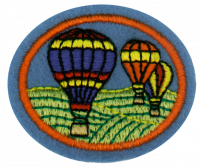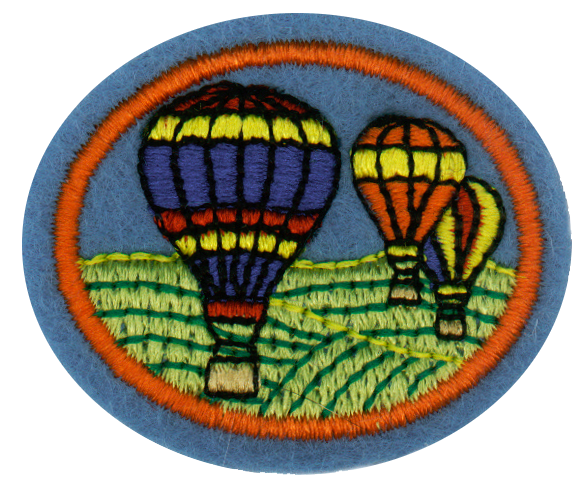Difference between revisions of "AY Honors/Hot Air Balloons/Answer Key/es"
From Pathfinder Wiki
< AY Honors | Hot Air BalloonsAY Honors/Hot Air Balloons/Answer Key/es
(Created page with "{{clear}}") |
(Created page with "</noinclude> <!-- 13. Construir y completar un modelo a escala de un globo aerostático (o dos si trabaja en pares). -->") |
||
| (2 intermediate revisions by the same user not shown) | |||
| Line 65: | Line 65: | ||
{{CloseReq}} <!-- 2 --> | {{CloseReq}} <!-- 2 --> | ||
{{ansreq|page={{#titleparts:{{PAGENAME}}|2|1}}|num=3}} | {{ansreq|page={{#titleparts:{{PAGENAME}}|2|1}}|num=3}} | ||
| − | <noinclude> | + | <noinclude></noinclude> |
| − | </noinclude> | + | <!-- 3. Usando un libro de texto de química o un libro de referencia de las tablas científicas, elaborar una sencilla tabla que demuestra la composición del peso del aire y el volumen del aire. --> |
| − | <!-- 3. | ||
| − | |||
| − | |||
| − | |||
| − | |||
| − | |||
| − | |||
| − | |||
| − | |||
| − | |||
| − | |||
| − | |||
| − | |||
| − | |||
| − | |||
| − | |||
{{clear}} | {{clear}} | ||
| Line 99: | Line 83: | ||
{{CloseReq}} <!-- 3 --> | {{CloseReq}} <!-- 3 --> | ||
{{ansreq|page={{#titleparts:{{PAGENAME}}|2|1}}|num=4}} | {{ansreq|page={{#titleparts:{{PAGENAME}}|2|1}}|num=4}} | ||
| − | <noinclude> | + | <noinclude></noinclude> |
| − | </noinclude> | + | <!-- 4. Elaborar una simple tabla que muestre una comparación del número atómico, peso atómico y la densidad del hidrógeno, helio, nitrógeno y oxígeno. --> |
| − | <!-- 4. | ||
| − | |||
| Line 110: | Line 92: | ||
{{CloseReq}} <!-- 4 --> | {{CloseReq}} <!-- 4 --> | ||
{{ansreq|page={{#titleparts:{{PAGENAME}}|2|1}}|num=5}} | {{ansreq|page={{#titleparts:{{PAGENAME}}|2|1}}|num=5}} | ||
| − | <noinclude> | + | <noinclude></noinclude> |
| − | </noinclude> | + | <!-- 5. Nombrar dos gases que se utilizan en los globos llenos de gas. --> |
| − | <!-- 5. | ||
| − | |||
| − | |||
{{clear}} | {{clear}} | ||
| Line 121: | Line 100: | ||
{{CloseReq}} <!-- 5 --> | {{CloseReq}} <!-- 5 --> | ||
{{ansreq|page={{#titleparts:{{PAGENAME}}|2|1}}|num=6}} | {{ansreq|page={{#titleparts:{{PAGENAME}}|2|1}}|num=6}} | ||
| − | <noinclude> | + | <noinclude></noinclude> |
| − | </noinclude> | + | <!-- 6. Explicar cómo el calor y la temperatura afectan la densidad del aire y cómo esto se aplica a los globos aerostáticos. --> |
| − | <!-- 6. | ||
| − | |||
| − | |||
<noinclude></noinclude> | <noinclude></noinclude> | ||
{{CloseReq}} <!-- 6 --> | {{CloseReq}} <!-- 6 --> | ||
{{ansreq|page={{#titleparts:{{PAGENAME}}|2|1}}|num=7}} | {{ansreq|page={{#titleparts:{{PAGENAME}}|2|1}}|num=7}} | ||
| − | <noinclude> | + | <noinclude></noinclude> |
| − | </noinclude> | + | <!-- 7. Explicar el papel de cada una de las siguientes en la estructura y el vuelo de un globo aerostático: --> |
| − | <!-- 7. | ||
| − | |||
| − | |||
| − | |||
| − | |||
| − | |||
<noinclude></noinclude> | <noinclude></noinclude> | ||
{{CloseReq}} <!-- 7 --> | {{CloseReq}} <!-- 7 --> | ||
{{ansreq|page={{#titleparts:{{PAGENAME}}|2|1}}|num=8}} | {{ansreq|page={{#titleparts:{{PAGENAME}}|2|1}}|num=8}} | ||
| − | <noinclude> | + | <noinclude></noinclude> |
| − | </noinclude> | + | <!-- 8. Nombrar dos materiales que pueden utilizarse para la envoltura/vela de un globo aerostático y comparar las ventajas que cada uno de los cables tiene por sus propiedades. --> |
| − | <!-- 8. | ||
| − | |||
| − | |||
| − | |||
| − | |||
<noinclude></noinclude> | <noinclude></noinclude> | ||
{{CloseReq}} <!-- 8 --> | {{CloseReq}} <!-- 8 --> | ||
{{ansreq|page={{#titleparts:{{PAGENAME}}|2|1}}|num=9}} | {{ansreq|page={{#titleparts:{{PAGENAME}}|2|1}}|num=9}} | ||
| − | <noinclude> | + | <noinclude></noinclude> |
| − | </noinclude> | + | <!-- 9. Describir la forma como globos en vuelo han servido en forma útil en: --> |
| − | <!-- 9. | + | <noinclude></noinclude> |
| − | <noinclude | ||
| − | |||
{{ansreq|page={{#titleparts:{{PAGENAME}}|2|1}}|num=9a}} | {{ansreq|page={{#titleparts:{{PAGENAME}}|2|1}}|num=9a}} | ||
<noinclude></noinclude> | <noinclude></noinclude> | ||
| Line 169: | Line 132: | ||
{{CloseReq}} <!-- 9 --> | {{CloseReq}} <!-- 9 --> | ||
{{ansreq|page={{#titleparts:{{PAGENAME}}|2|1}}|num=10}} | {{ansreq|page={{#titleparts:{{PAGENAME}}|2|1}}|num=10}} | ||
| − | <noinclude> | + | <noinclude></noinclude> |
| − | </noinclude> | + | <!-- 10. ¿A qué hora del día la mayoría de los vuelos en globos deportivos toman lugar? ¿Por qué? --> |
| − | <!-- 10. | ||
| − | |||
| − | |||
<noinclude></noinclude> | <noinclude></noinclude> | ||
{{CloseReq}} <!-- 10 --> | {{CloseReq}} <!-- 10 --> | ||
{{ansreq|page={{#titleparts:{{PAGENAME}}|2|1}}|num=11}} | {{ansreq|page={{#titleparts:{{PAGENAME}}|2|1}}|num=11}} | ||
| − | <noinclude> | + | <noinclude></noinclude> |
| − | </noinclude> | + | <!-- 11. Describir cómo un piloto controla el movimiento vertical de: --> |
| − | <!-- 11. | + | <noinclude></noinclude> |
| − | <noinclude | ||
| − | |||
{{ansreq|page={{#titleparts:{{PAGENAME}}|2|1}}|num=11a}} | {{ansreq|page={{#titleparts:{{PAGENAME}}|2|1}}|num=11a}} | ||
<noinclude></noinclude> | <noinclude></noinclude> | ||
| Line 195: | Line 153: | ||
{{CloseReq}} <!-- 11 --> | {{CloseReq}} <!-- 11 --> | ||
{{ansreq|page={{#titleparts:{{PAGENAME}}|2|1}}|num=12}} | {{ansreq|page={{#titleparts:{{PAGENAME}}|2|1}}|num=12}} | ||
| − | <noinclude> | + | <noinclude></noinclude> |
| − | </noinclude> | + | <!-- 12. Describir cómo un piloto controla el movimiento horizontal o lateral de un globo en vuelo. --> |
| − | <!-- 12. | ||
| − | |||
| − | |||
<noinclude></noinclude> | <noinclude></noinclude> | ||
{{CloseReq}} <!-- 12 --> | {{CloseReq}} <!-- 12 --> | ||
{{ansreq|page={{#titleparts:{{PAGENAME}}|2|1}}|num=13}} | {{ansreq|page={{#titleparts:{{PAGENAME}}|2|1}}|num=13}} | ||
| − | <noinclude> | + | <noinclude></noinclude> |
| − | </noinclude> | + | <!-- 13. Construir y completar un modelo a escala de un globo aerostático (o dos si trabaja en pares). --> |
| − | <!-- 13. | ||
| − | |||
| − | |||
| − | |||
| − | |||
| − | |||
| − | |||
| − | |||
| − | |||
| − | |||
| − | |||
{{clear}} | {{clear}} | ||
| Line 233: | Line 177: | ||
{{CloseReq}} <!-- 13 --> | {{CloseReq}} <!-- 13 --> | ||
{{ansreq|page={{#titleparts:{{PAGENAME}}|2|1}}|num=14}} | {{ansreq|page={{#titleparts:{{PAGENAME}}|2|1}}|num=14}} | ||
| − | <noinclude> | + | <noinclude></noinclude> |
| − | </noinclude> | + | <!-- 14. Lanzar con éxito, volar y recuperar el modelo a escala del globo aerostático que construyó. --> |
| − | <!-- 14. | ||
| − | |||
{{clear}} | {{clear}} | ||
Latest revision as of 14:16, 28 April 2021
Globos aerostáticos
Nivel de destreza
1
Año
2008
Version
01.01.2025
Autoridad de aprobación
Asociación General
1
Decir el papel que tuvo cada una de las siguientes personas en el desarrollo de globos volantes:
1a
Joseph-Michel Montgolfier y Jacques-Michel Montgolfier
1b
Jean-François Pilâtre de Rozier y François Laurent le Vieux d'Arlandes
1c
Jacques Alexandre César Charles y Nicolas-Louis Robert
1d
Benjamín L. Abruzzo, Max Leroy Anderson y Larry Newman
1e
Bertrand Piccard y Brian Jones
2
Citar el principio de Arquímedes de Siracusa. Describir brevemente cómo se aplica a cada uno de los siguientes:
2a
Un pedazo de corcho flotando en un recipiente de agua
2b
Un barco flotando en el océano
2c
Un globo aerostático flotando en la atmósfera
3
Usando un libro de texto de química o un libro de referencia de las tablas científicas, elaborar una sencilla tabla que demuestra la composición del peso del aire y el volumen del aire.
4
Elaborar una simple tabla que muestre una comparación del número atómico, peso atómico y la densidad del hidrógeno, helio, nitrógeno y oxígeno.
5
Nombrar dos gases que se utilizan en los globos llenos de gas.
6
Explicar cómo el calor y la temperatura afectan la densidad del aire y cómo esto se aplica a los globos aerostáticos.
7
Explicar el papel de cada una de las siguientes en la estructura y el vuelo de un globo aerostático:
8
Nombrar dos materiales que pueden utilizarse para la envoltura/vela de un globo aerostático y comparar las ventajas que cada uno de los cables tiene por sus propiedades.
9
Describir la forma como globos en vuelo han servido en forma útil en:
9a
Campañas militares
9b
Investigaciones científicas
10
¿A qué hora del día la mayoría de los vuelos en globos deportivos toman lugar? ¿Por qué?
11
Describir cómo un piloto controla el movimiento vertical de:
11a
Un globo aerostático
11b
Un globo lleno de gas
12
Describir cómo un piloto controla el movimiento horizontal o lateral de un globo en vuelo.
13
Construir y completar un modelo a escala de un globo aerostático (o dos si trabaja en pares).
14
Lanzar con éxito, volar y recuperar el modelo a escala del globo aerostático que construyó.




